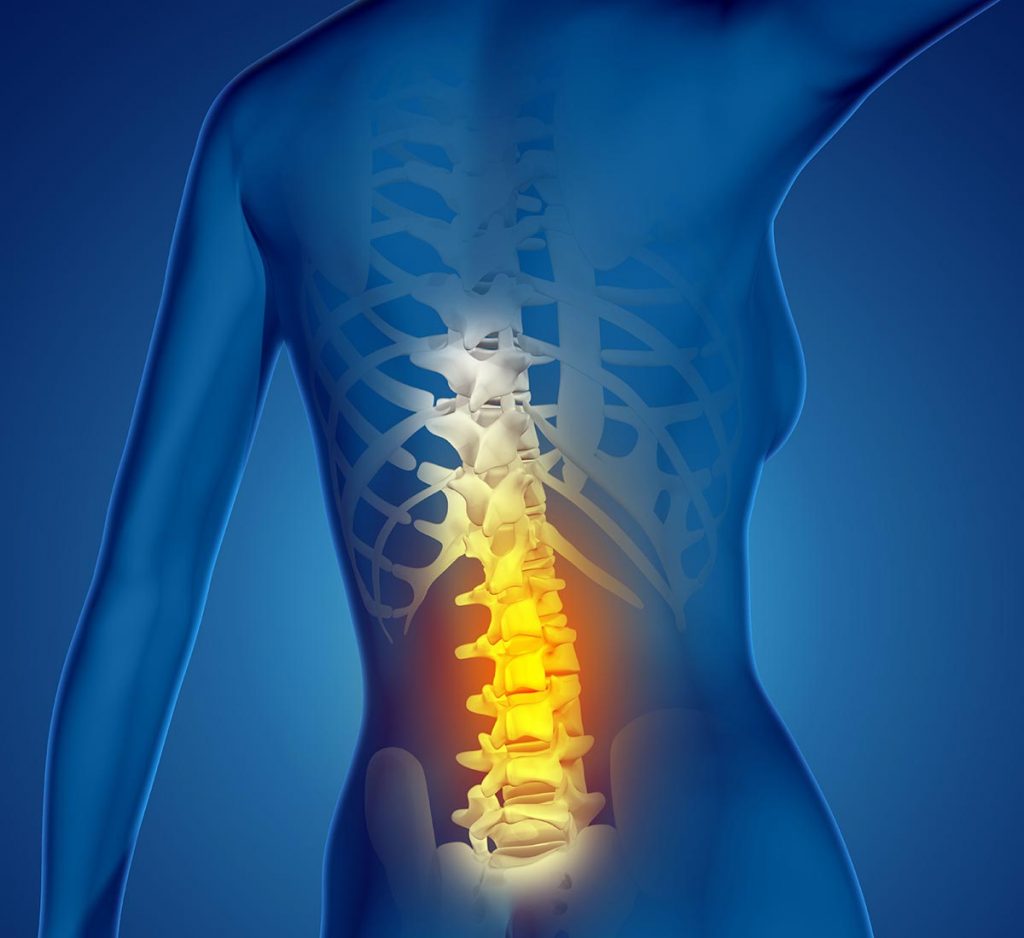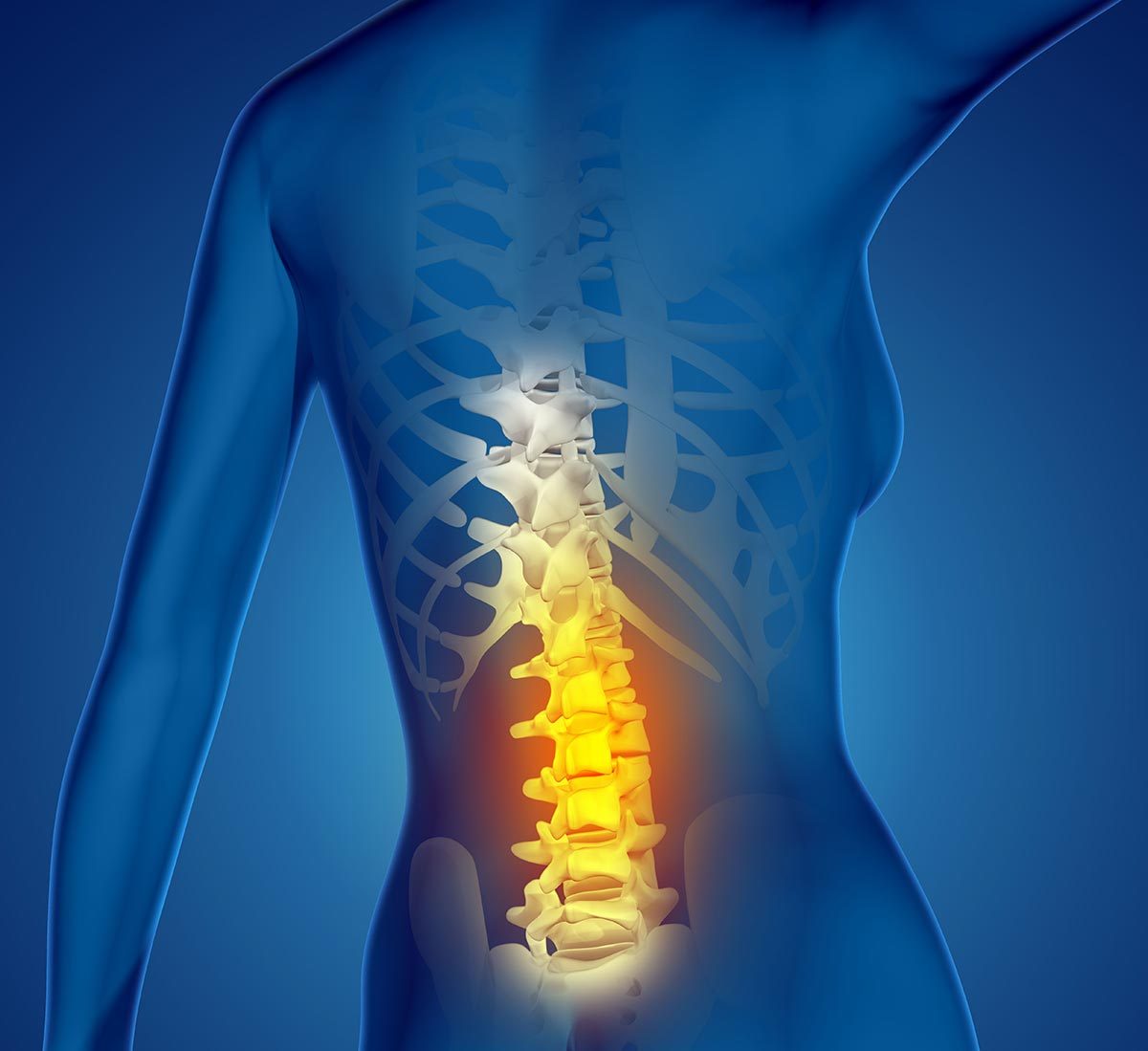Discogenic Back Pain
![]()
Call (703) 520-1031 or use the form to send us your contacts.

Discogenic back pain is a condition in which the discs in the spine deteriorate, producing pain. Pain can occur in any area of the spine. The pain can be persistent or sporadic and is usually experienced in the lower or upper back.
What is Discogenic Back Pain?
The spinal column is made up of a series of bones called vertebra. Between each of the vertebra is a spinal disc that serves as a shock absorber and stops two vertebra from rubbing together. The round disc consists of two parts. The outer portion (annulus) is made of tough collagen fiber and is connected to each vertebra bone. It surrounds a core (nucleus) made up of a network of protein fibers that are suspended in a gel-like material.
The gel-like core does not have nerves. The outer ring-shaped annulus does. When the discs deteriorate or are damaged, inflammation and pain ensues. Most discogenic pain occurs in the lower back (lumbar spine), but it can occur anywhere along the spine. The second common area for this kind of pain is in the neck or upper back.
One of the puzzling facts about discogenic pain is that, though it is believed to be related to disc degeneration, degeneration does not always cause pain. Medical research is ongoing.
What are the Symptoms?
There is no one set of discogenic back pain symptoms. The symptoms vary from person to person, including pain intensity that ranges from mild to intense.

Discogenic low back pain symptoms include:
- Persistent pain in the back and not in the arm or leg.
- Pain when the spine is compressed, i.e. bending, sitting, twisting, etc.
- Pain is fully or partially relieved when lying down.
- Pain may be felt in the back of the thigh but does not extend into the lower leg.
Discogenic upper back pain symptoms include:
- Pain in the neck when the head is tilted or turned.
- Pain in the neck when the head is held in the same position for a period of time.
- Muscle spasms in the neck.
- Pain extending down the arm from the neck.
Pain can start suddenly due to something like an injury, or it can start gradually and get progressively worse, usually due to aging.
What are the Causes?
There are several possible causes of disc-related pain. One type of discogenic disorder is called Internal Disc Disruption (IDD). Discogenic back pain internal disc disruption refers to pain caused when a spinal disc tears or cracks, allowing the core tissue to connect with the annulus. A process occurs in which annular nerves are irritated by inflammatory proteins from the nucleus that are released as a result of the tear, leading to an inflammatory response. Not all annular tears or fissures cause pain though.
Other causes of disc issues that lead to pain include:
- Aging – aging can cause discs to dry out and shrink or get thinner, or to weaken through normal wear and tear; these events place stress on the disc annulus which in turn leads to tears or cracks.
- Too much pressure is placed on the spine, and the disc’s outer ring, which has nerves, is damaged.
- Collapsing or misaligned discs place pressure on nerve roots close to the spine.
- Genetics alters disc composition, making them dry out faster than normal and hurting the ability of the spine to carry an even load; the disc is eventually torn over time.
- Vertebra edges deteriorate, releasing inflammatory chemicals that increase the speed of disc degeneration.
- Disease leads to disc deterioration.
How is the Condition Diagnosed?
Clinical diagnosis of discogenic low back pain begins with the physician doing a physical examination and obtaining a medical history. An MRI (magnetic resonance imaging) is ordered first in most cases, or the physician may choose to order a CT (computerized tomography) scan.
The goal is to pinpoint the pain’s source. It may be necessary to order an invasive test like a discogram. A dye is injected into the disc or discs, so they are visible on a fluoroscope monitor and on an x-ray film. However, this method of diagnosis is only used when other methods fail to identify the specific discs causing pain.
What are the Common Treatments?
Discogenic back pain treatment always begins with conservative methods first. The goal is to reduce the amount of inflammation around the nerves to relieve pain. Treatments include:
- medications, non-steroidal anti-inflammatory drugs (NSAIDs), analgesics, steroids
- physical therapy, i.e. ultrasound, massage, exercises, etc.
- applying ice and heat
- an injection of an anesthetic and corticosteroid medications (epidural nerve block) while using x-ray guidance
- lifestyle changes, i.e. losing weight, reducing stress, adjusting posture throughout the day, etc.
Surgical treatments are only considered as a last resort for discogenic back pain. They include a spinal fusion and replacement of the deteriorated disc with a moveable implant. However, there are new surgical and non-surgical treatments options being tested all the time.
The good news is that most people can get relief from back pain. Consult with a physician to learn the best customized treatment options for a particular situation.
